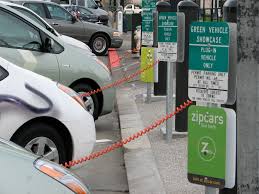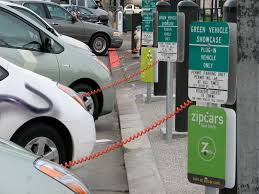
Expanding from the continent’s cities to its motorways is the battle over how and where Europeans charge their electric cars.
While advances in electric vehicles means where they build them is changing, in the fast-growing business of charging stations, power utilities, tech start-ups and oil majors are fighting to establish themselves as the dominant players.
The oil companies, which typically have their own networks of filling stations, have dominated the refuelling conventional petrol and diesel cars on motorways for long. And now creating major competition for limited space at motorway service areas, several of them are now talking about setting up high-power charging networks.
“It is a bit of a landgrab now to win this sector,” said Tim Payne, chief executive of British charging start-up InstaVolt, which has raised 12 million pounds to install 3,000 charge points across Britain by 2020.
Europe’s utilities were happy to help cities and companies install slow and inexpensive charging points at homes, offices and shops, often supported by state subsidies even though the range of electric vehicles (EVs) was less than 100 km (60 miles).
But battery-powered cars with enough range to drive across countries are now being made by Tesla, Porsche and BMW. On the eve of this week’s Frankfurt motor show to accelerate their shift to electric cars, Daimler and Volkswagen also announced plans on similar lines.
But there is a long way to go for charging infrastructure. “Where is the network of charging points that will be required? Indeed where is the power and the grid?” Ralf Speth, boss of Britain’s Jaguar Land Rover, asked last week.
However, plans for building networks of high-voltage fast-charging stations which can refill a battery in less than half an hour instead of overnight are now being made by experts including ChargePoint and Engi.
In England, finning station operators are getting increased traffic to their shops at the sites and additional revenue from the lease as InstaVolt is renting land from them. By selling power through the chargers., it earns its margin.
Morgan Stanley says that while utilities have natural skills in the new industry, it was too early to determine who will come put on top and estimates that 1-3 million public charging points could be needed in western Europe by 2030. “The winning business model is up for grabs,” it said.
According to the International Energy Agency, with only about six percent of them fast, today, there are fewer than 100,000 public charging points available in Europe.
Almost none of these is super-fast which is a term usually used for charging stations with an output of at least 150 kilowatts. They are now being targeted by those trying to become market leaders, with more than three times faster than current-generation chargers.
Snapped up by French utility Engie in March, Dutch EV-Box, one of Europe’s biggest makers of charging stations, is among the contenders.
“We expect hundreds of millions of annual revenue from EV-Box in a few years,” Thierry Lepercq, head of innovation at Engie, said.
(Source:www.reuters.com)
While advances in electric vehicles means where they build them is changing, in the fast-growing business of charging stations, power utilities, tech start-ups and oil majors are fighting to establish themselves as the dominant players.
The oil companies, which typically have their own networks of filling stations, have dominated the refuelling conventional petrol and diesel cars on motorways for long. And now creating major competition for limited space at motorway service areas, several of them are now talking about setting up high-power charging networks.
“It is a bit of a landgrab now to win this sector,” said Tim Payne, chief executive of British charging start-up InstaVolt, which has raised 12 million pounds to install 3,000 charge points across Britain by 2020.
Europe’s utilities were happy to help cities and companies install slow and inexpensive charging points at homes, offices and shops, often supported by state subsidies even though the range of electric vehicles (EVs) was less than 100 km (60 miles).
But battery-powered cars with enough range to drive across countries are now being made by Tesla, Porsche and BMW. On the eve of this week’s Frankfurt motor show to accelerate their shift to electric cars, Daimler and Volkswagen also announced plans on similar lines.
But there is a long way to go for charging infrastructure. “Where is the network of charging points that will be required? Indeed where is the power and the grid?” Ralf Speth, boss of Britain’s Jaguar Land Rover, asked last week.
However, plans for building networks of high-voltage fast-charging stations which can refill a battery in less than half an hour instead of overnight are now being made by experts including ChargePoint and Engi.
In England, finning station operators are getting increased traffic to their shops at the sites and additional revenue from the lease as InstaVolt is renting land from them. By selling power through the chargers., it earns its margin.
Morgan Stanley says that while utilities have natural skills in the new industry, it was too early to determine who will come put on top and estimates that 1-3 million public charging points could be needed in western Europe by 2030. “The winning business model is up for grabs,” it said.
According to the International Energy Agency, with only about six percent of them fast, today, there are fewer than 100,000 public charging points available in Europe.
Almost none of these is super-fast which is a term usually used for charging stations with an output of at least 150 kilowatts. They are now being targeted by those trying to become market leaders, with more than three times faster than current-generation chargers.
Snapped up by French utility Engie in March, Dutch EV-Box, one of Europe’s biggest makers of charging stations, is among the contenders.
“We expect hundreds of millions of annual revenue from EV-Box in a few years,” Thierry Lepercq, head of innovation at Engie, said.
(Source:www.reuters.com)














